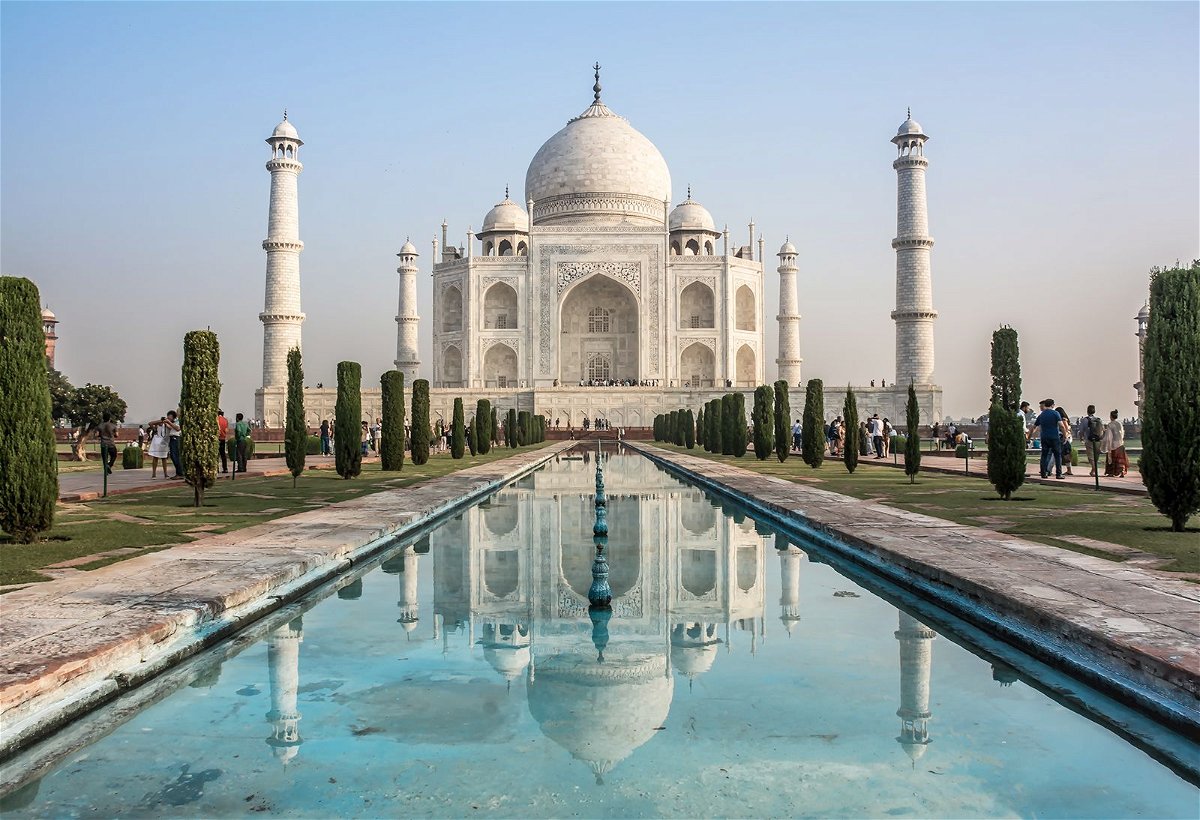This monument stood for hundreds of years before vandals smashed it. Historians say it must never happen again

School children during a heritage walk at Zafar Mahal in New Delhi.
By Rhea Mogul, CNN
(CNN) — An act of vandalism at an 18th century monument built by the once powerful Mughal empire has sparked anger in India, with historians urging authorities to provide better protection for the country’s vast cultural heritage.
The destruction of parts of three emperors’ tombs at the Zafar Mahal palace in New Delhi was discovered by historians Sunday during a heritage walk at the site, which is overseen by a government agency responsible for conserving historic monuments.
“It is believed that this is the last great Mughal monument,” said historian Sam Dalrymple, who alerted a security guard to the damage. “Zafar Mahal has been slowly falling apart for years and is symbolic of the wider neglect of Mughal history in Delhi.”
The vandalism includes damage to part of a marble lattice screen, or jaali, that surrounds the empty grave of Bahadur Shah Zafar, the final Mughal emperor, who was exiled in 1858 to Burma – now Myanmar – by India’s former British rulers.
The destruction was “really heartbreaking,” said artist Srishti Rana Menon.
“It’s one of the most hauntingly beautiful place (sic) and those jaalis were nothing short of exquisite,” she wrote on Instagram. “What’s lost is really priceless.”
“Absolutely shocked, hurt and angry at whatever took place,” wrote another user. “Considering myself lucky to witness these before the vandalism.”
The palace, which is free to enter for the public, is among more than 170 heritage sites in Delhi that are protected by the government-run Archaeological Survey of India (ASI).
Praveen Singh, superintending archaeologist from ASI Delhi Circle, said there was “nothing huge” in the vandalism at Zafar Mahal. “No doubt it is damaged. But the whole monument has not vanished,” he told CNN, adding that a complaint had been lodged with police in Delhi’s southern Mehrauli district.
No arrests have been made and authorities will investigate the case, a Mehrauli police official said.
Left to neglect
Delhi, a metropolis of more than 20 million people, has seen rapid urbanization over the past few decades, with a vast, sparkling modern metro system, and a burgeoning middle class that has come to symbolize India’s economic growth.
But between its meandering roads stand centuries-old monuments and medieval ruins that put the Indian capital on a par with the world’s great ancient cities, historians say.
“It is one of the rare cities on the scale of heritage of Rome and Cairo,” said Dalrymple, who grew up in Delhi. “The sheer extent of history is remarkable.”
He also questioned how vandals were able to cause damage at a monument in the capital.
“One of the greatest tragedies is that this is happening in Delhi. What’s happening outside?” he said.
Even before the vandalism, Zafar Mahal had fallen into disrepair, with weeds growing around the tombs and dirt on the walls and other structures, according to amateur historian Shah Umair.
“The ASI have been promising for years they will renovate the palace, but there have been no steps taken so far,” said Umair, who discovered the damage alongside Dalrymple.
Singh, from ASI, said the agency had been expected to start repairs at Zafar Mahal in April, but the work had been delayed as cost estimates had not been set.
“We do regular preservation and conservation of all monuments as and when required,” Singh said.
Mughal heritage
The Mughal empire, which ruled India from 1526 and 1858, reached its pinnacle under emperor Shah Jahan, who commissioned the iconic Taj Mahal in Agra as a mausoleum for his wife and built a wealth of other artistic marvels across the country.
And the destroyed jaali at Zafar Mahal is considered an archetype of the Indo-Islamic art movement that flourished during Mughal rule.
In recent years, however, the rise of Hindu nationalism in India has put some Mughal-era monuments at the center of controversy. For example, anger erupted in 2017 after the UNESCO-listed Taj Mahal was excluded from an official government tourism brochure.
Former Tourism Minister Alphons Kannanthanam dismissed the controversy at the time, stating the Taj Mahal was “India’s pride.”
For many, however, the controversy showed creeping intent by the ruling Hindu-nationalist Bharatiya Janata Party to exclude India’s former Muslim rulers from its cultural history.
Historian Rana Safvi said some of the Mughal architecture found in south Delhi’s Mehrauli district was unique to India and called on authorities to do more to protect it.
“This very typical Indo-Islamic art, you don’t see anywhere but in this region,” said Safvi, referring to well-known motifs like marble jaalis and floral symbols.
Safvi also urged authorities to do more to protect lesser known, but equally significant monuments.
“We should take pride in our history,” she said.
The-CNN-Wire
™ & © 2023 Cable News Network, Inc., a Warner Bros. Discovery Company. All rights reserved.
CNN’s Aishwarya Iyer contributed reporting from New Delhi.